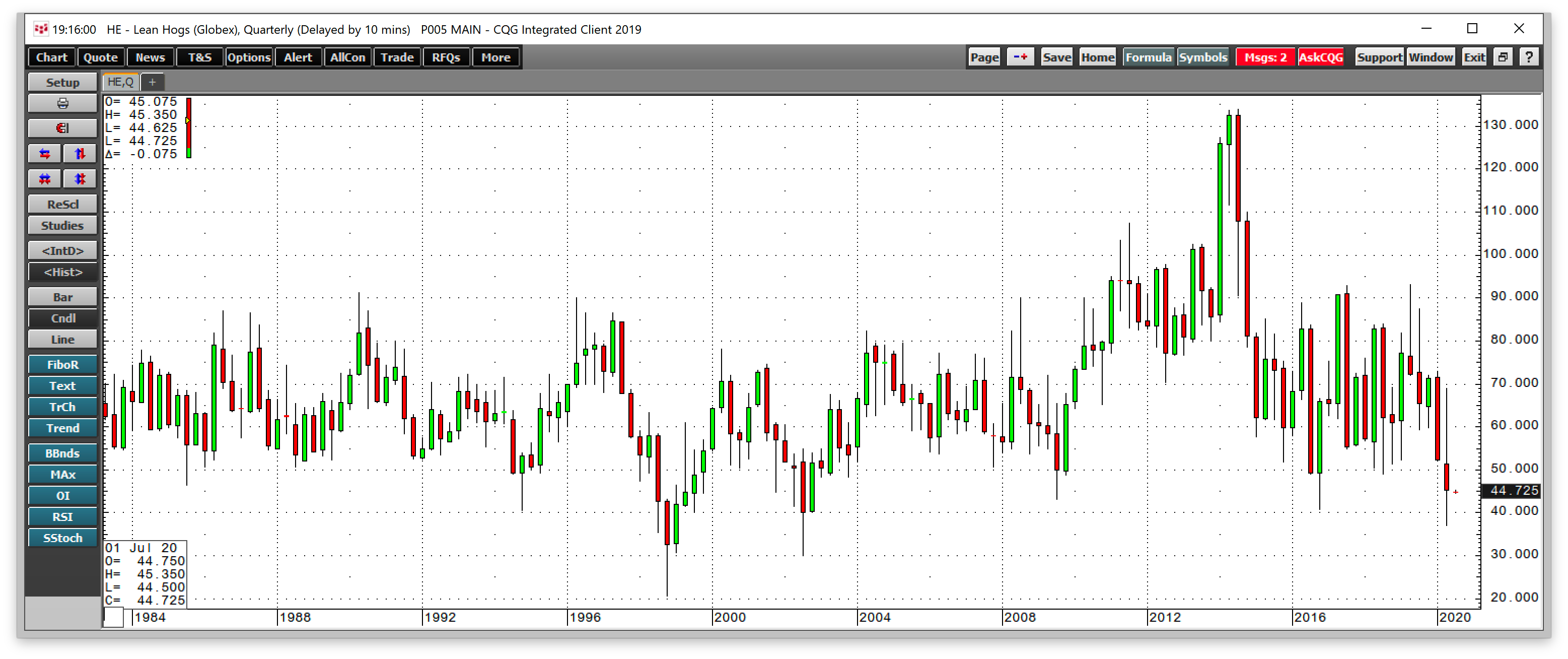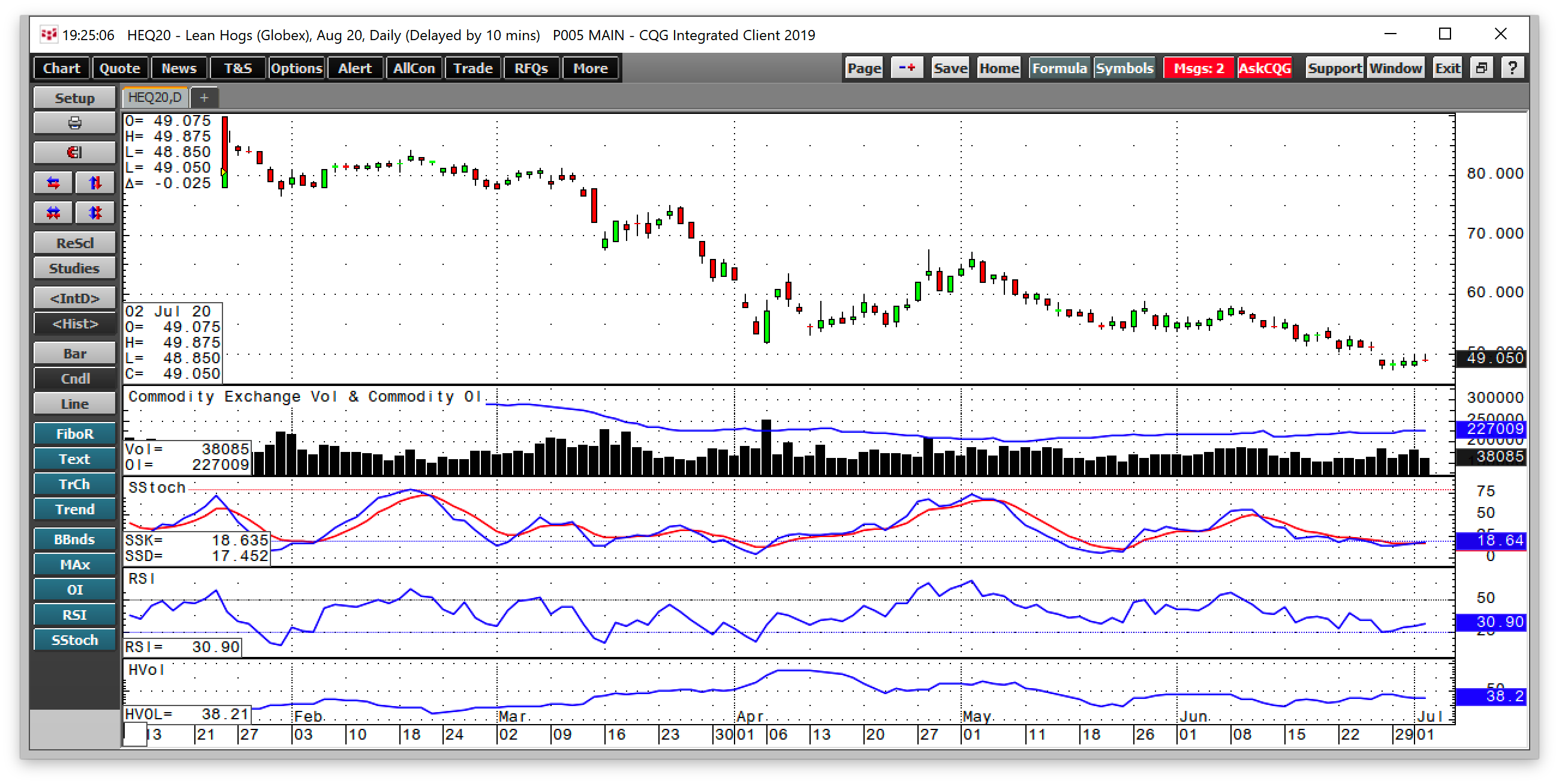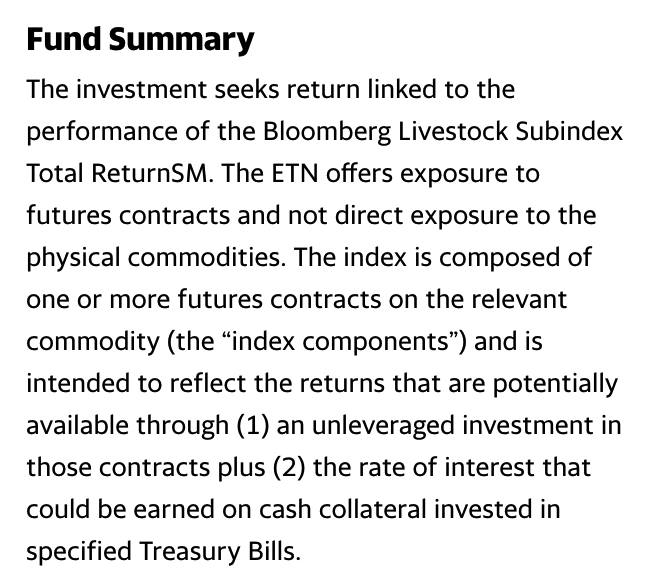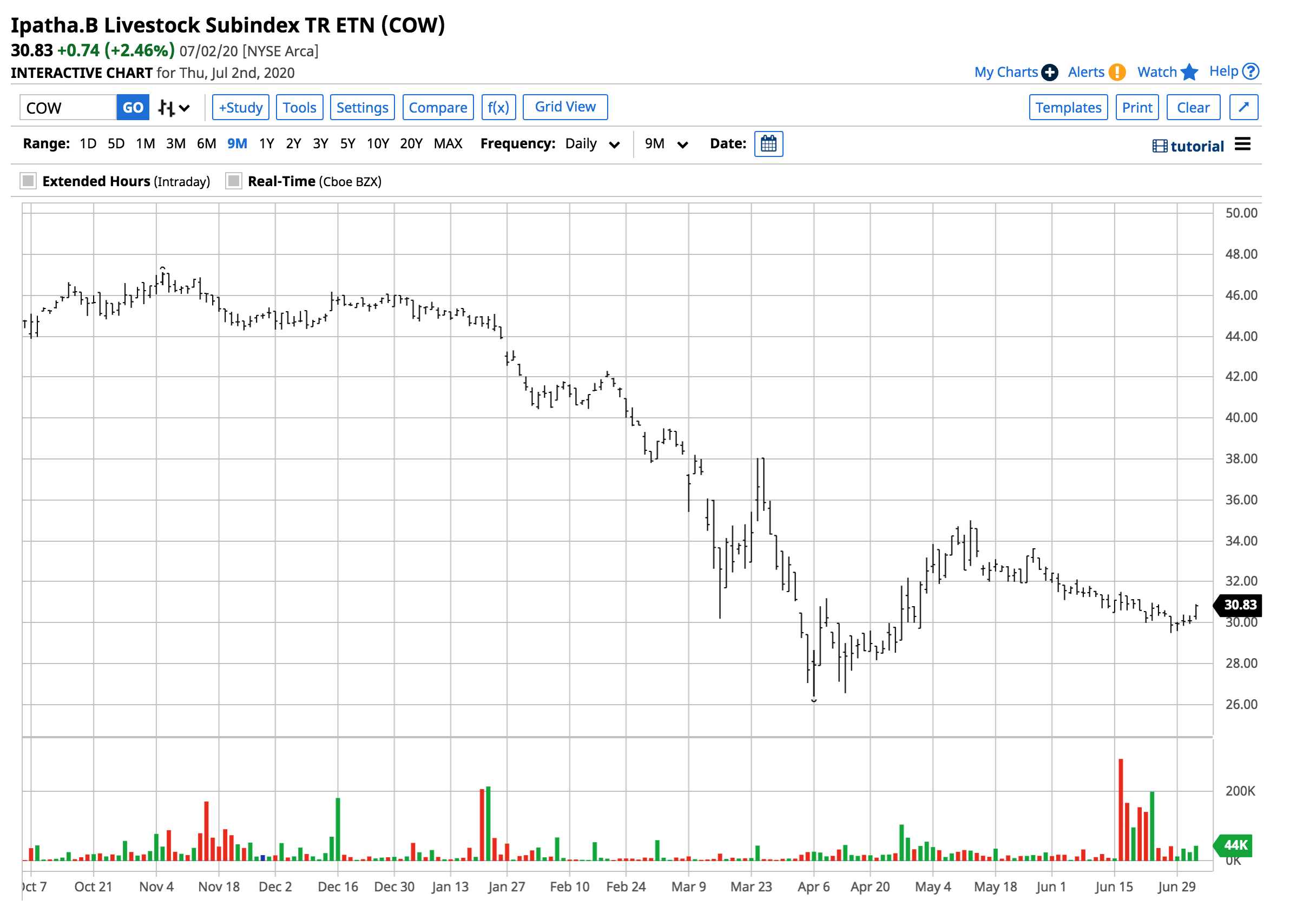This article was written exclusively for Investing.com
- Forget the peak season—producer prices are at lows
- Bottlenecks create shortages and much higher prices for consumers
- Levels to watch in the lean hog futures
- 2008/2009 may be an omen for the price of pork and other commodities
In 2019, an outbreak of African Swine Fever in China and surrounding countries created a pork shortage. With over 1.4 billion people, China is the world’s leading pork-consuming nation.
The Asian nation's appetite for the other white meat is so massive that in 2013, a Chinese company took Smithfield Foods—the leading US producer of pork—private. That Chinese company has owned the Virginia-based Smithfield for the past seven years. At the time of the acquisition, the US government put up no resistance to the purchase, even though a US company could never purchase a Chinese company on the same terms.
The African Swine Fever caused China to dip into its strategic supplies of frozen pork. Sino-US trade friction had already prevented the free flow of pork exports from the US, where supplies were plentiful, to the world’s most populous nation.
In 2020, the global pandemic and rising number of coronavirus cases have caused a significant dislocation in the hog futures market in the US as well. The futures price dropped to the lowest level in almost two decades, causing substantial woes for pig producers.
Meanwhile, problems with the supply chain have caused prices to move significantly higher for consumers at meat counters in their supermarkets. In some cases, shortages of pork have forced markets to limit purchases. The price of lean hog futures reflects the weak demand for producers but is nothing more than a mirage for pork-hungry consumers.
Forget the peak season—producer prices are at lows
In the US, the peak season for animal protein demand starts in late May and runs through early September. During the summer, barbecue grills fill the air with the mouth-watering aroma of burgers, hot dogs, chicken, ribs, sausages, and other epicurean treats for carnivores. Yet the price of lean hog futures implies bargain-basement levels for consumers. 
Source, all charts: CQG
The quarterly chart above shows that at the current price of below 45 cents per pound, the price of pork is not that far above the most recent low for the agricultural commodity, at 37 cents per pound in April. At that time, hog futures fell to an eighteen-year low.
At the end of June 2019, the price of nearby hog futures stood at 72.3 cents per pound, over 27 cents higher than the price last week.
The prevailing low price of hog futures creates a disaster for producers, so why aren't consumers enjoying cheaper prices at the checkout as well?
Bottlenecks create shortages and much higher consumer prices
The problem in the meat markets is that outbreaks of coronavirus have created a bottleneck in the supply chain. Processing plants across the US experienced shutdowns as workers began coming down with the virus. The plants limited their intake of animals, creating shortages and rising prices at the supermarket butcher counter.
Local supermarkets and large-scale retailers like Costco in the US are limiting purchases. As a result, the cost of pork and beef have escalated, despite the low prices in the futures market.
Levels to watch in lean hog futures
The recent low in the price of pork at 37 cents per pound stands as critical technical support in the futures market. 
The daily chart of nearby August lean hog futures, above, shows that the price was below 50 cents per pound at the end of last week. Short-term support is at the recent low of 47.525 cents per pound.
Technical resistance is at the June 8 high of 58.025 cents, the May 27 high of 58.95 cents, and the late April peak at 67.575 cents per pound. Meanwhile, price momentum and relative strength indicators are in oversold territory.
The total number of open long and short positions in the futures market declined from the 300,000-contract level in February to 227,009 contracts at the end of last week, a drop of over 24%. The futures market has become useless for both producers and consumers.
Since those who raise the animals cannot sell them to meat processing plants, they have had to close out price hedges. As for consumers, the futures prices do not reflect the bottleneck’s impact at processing plants.
Bottom line: coronavirus has created a significant dislocation in the meat markets. The situation in cattle futures has been similar to the hog market during the peak season for demand in 2020.
2008/2009 may be an omen for the price of pork and other commodities
The cure for low commodity prices is lower production. As such, producers are likely to reduce output and raise fewer animals in 2021 and beyond, in the wake of 2020's financial woes.
In the aftermath of the 2008 global financial crisis, most commodity prices fell to multiyear lows. 
In 2009, lean hog futures reached a low of 43.05 cents. As producers reduced output, the price rose to a high of $1.07475 in August 2011. In 2014, lean hogs rallied to a record peak of $1.33875 as PED caused the death of over seven million suckling pigs in the US.
Meats are highly volatile commodities in the futures market. The coronavirus created a significant dislocation in the pork and beef markets in 2020. The odds favor far higher prices in the coming years, once there is a vaccine or effective therapies to treat the virus.
The most direct route for a risk position in the meat markets is via futures and futures options. However, the iPath Series B Bloomberg Livestock Subindex Total Return ETN (NYSE:COW) tracks meat prices. The fund summary for COW states:

Source: Yahoo Finance
COW is a thinly traded ETN with net assets of $11.4 million. An average of 38,636 shares trade each day. COW charges a 0.45% expense ratio.

Source: Barchart
The chart shows that COW closed at $45.83 per share at the end of 2019. After trading to a low of $26.40 in early April when cattle and hog futures were on the way to the lows, the price recovered to $30.83 at the end of last week. COW remains not far above its recent low.
COW could be an excellent product to put on your investment radar. The cyclical nature of meat prices could take beef and pork a lot higher in 2021 and beyond as producers reduce the number of animals they raise, and carnivores across the globe continue to demand meats.
I would be a buyer of the COW ETN product on further price weakness. Eventually, the bottlenecks will clear up, but producers may not be able to deliver enough supplies to meet the demand in the coming months and years.
